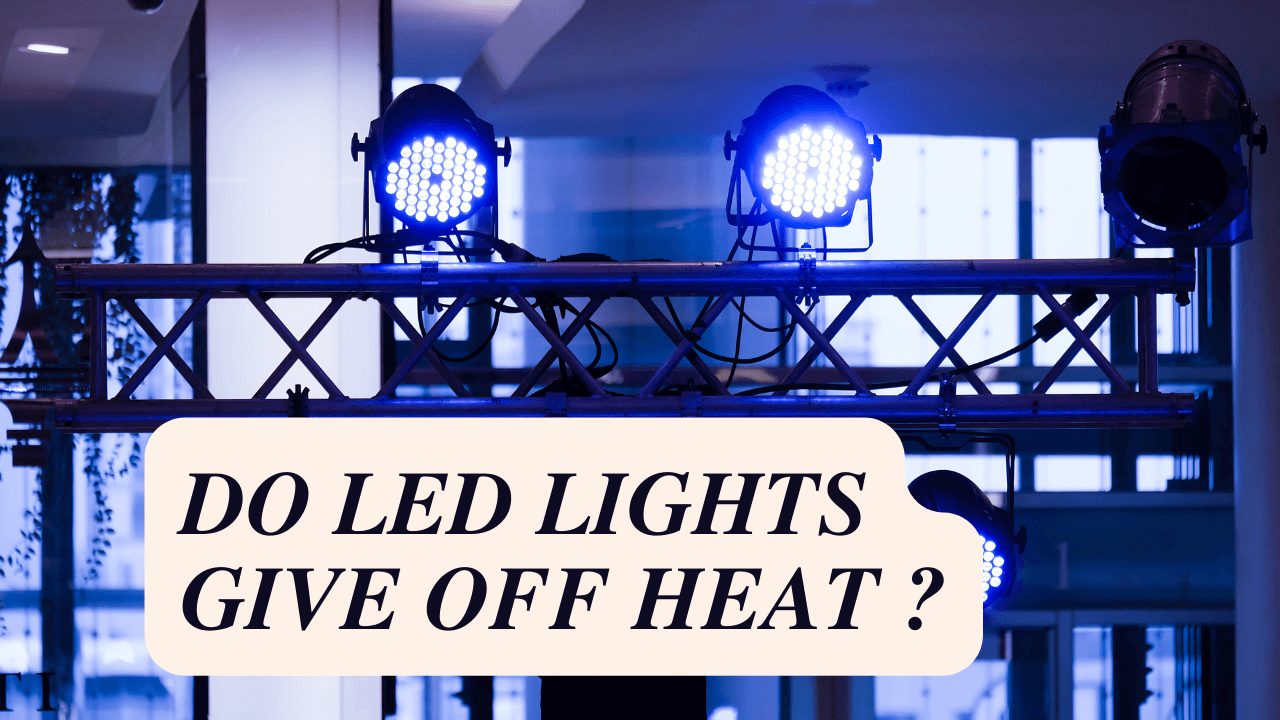Many individuals choose LEDs from traditional sources when upgrading or remodeling a light fixture. Even while LEDs are far more efficient than filament bulbs, they still produce heat, factoring into the overall design. What effects does heat have on LEDs, and what can you do about it?
If you’re trying to heat or cool a space, you might be curious about the effect of the light bulbs in that room on the temperature. Is it true that a light bulb raises the temperature of a room? A light bulb does make a room hotter.
While sure light bulbs do produce heat, the temperature of a room will not be significantly raised if only a few light bulbs are turned on.
This article will go over the exact amount of heat that various light bulbs produce, down to the degree. The rest of this post will be of interest to you whether you’re seeking to maximize the temperature of a space or simply curious about how light bulbs affect the temperature of a room.
Table of Contents
LED Light Don’t Produce Huge Waste Heat
LED technology has become significantly more efficient than traditional incandescent and halogen lighting. When the previous light sources turned on, they could not be touched without burning. Because of their tremendous efficiency, LED bulbs may appear to create very little waste heat.
Unfortunately, this is a pipe dream because there is still some waste heat even with today’s LED technology.
LED Light Working Mechanism
When a filament bulb produces heat, it improves its efficiency by lowering the amount of electricity needed to heat the filament to the point where it emits light. LEDs use the PN junction of the diode to emit light, which gets less efficient when it adds heat.
The LED’s forward voltage indicates the size of the energy gap an electron must cross before being absorbed into the diode junction and emitting light. When the heat is applied to the LED, the electrons move at a higher energy level, lowering the voltage.
LEDs are constant current devices that aren’t usually controlled so that they can adjust for the voltage drop by drawing more current. As the temperature rises, the LEDs simply fall backward along their curve and output less light.
No Emission of UV Rays
One of the biggest concerns when inquiring if LED lights emit heat is whether or not they release UV radiation. Ultra Violet radiation is not only harmful to the environment but has also been linked to a variety of health issues in humans, including cancer.
One severe issue with UV radiation, even from artificial light sources, is the potential for eye trauma, such as retinal damage. This has long been a source of concern for scientists. As a result, they’ve been putting in much effort to develop a better alternative to lamps that emit ultraviolet light. Many scientists believe that LED lights are the ideal solution to this ever-increasing problem.
The Effects Of Heat Generation From LED Light
Under some conditions, the heat generated by recessed LED spotlights or spots can become a concern. For example, recessed spotlights into the ceiling and may dissipate their waste heat predominantly downwards into the room. The spotlight’s sturdy metal structure aids the heat dissipation.
The number of spotlights can be raised while the power per spotlight is reduced to maintain the heat development of the LED spotlights as low as possible.
LED lights are typically cool to the touch. Plants can be positioned close to bulbs in plant growing applications, for example, without the risk of overheating or scorching the foliage. In comparison to hot-running lights, you will require less cultivation area.
High temperatures can cause failure or reduced light production in LED bulbs. So, you have to maintain the number of lights to keep the area cool. Typical LED lamps feature heat sinks and cooling fins to dissipate heat, which means they don’t radiate much heat to the outside world.
Why Do You Prefer LED lights Over Other Options?
Aside from the numerous advantages of LED lights, such as that they do not generate excess heat, there are also issues such as harmful compounds to consider. Other lights can release toxic fumes and gases to humans and animals.
For example, CFL light bulbs contain mercury, which is harmful to human health. If a bulb breaks and the dangerous metal is unintentionally handled, infants and children are at a high risk of severe consequences due to mercury poisoning.
As a result, if an LED bulb creates less heat, you may believe it delivers low light. This might be perplexing, especially when shopping for bulbs because they appear to have significantly different wattages. You might be surprised to learn that a low-wattage LED can produce the same amount of light as a high-wattage incandescent bulb.
Final Words
While LEDs generate heat, they are still much more relaxed than typical incandescent lamps. So, you have to choose the lights for your room or other plant growing areas according to heat considerations. For sure, installing the LED bulbs would be a cost-effective and less energy consumer option for your home.
Hopefully, this article will help know all about the parameters and heating effects of the LED lights. Now, it’s up to you to either install the LED lights or fluorescent bulbs in your home.





